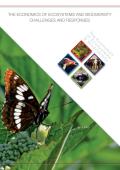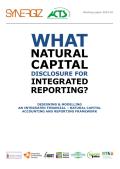
If economic arguments could make such a strong case for early action and policy change to address the threats of climate change, then could the same be possible for biodiversity loss? The Economics of Ecosystems and Biodiversity (TEEB) has been exploring this question since the initiative was launched by Germany and the European Commission in 2007. Half a decade later this publication based on a chapter included in the book “Nature in the Balance: The Economics of Biodiversity” (eds. Dieter Helm and Cameron Hepburn), describes the life of TEEB to date, progress made towards its goal of mainstreaming the economics of nature, the main challenges as the initiative begins a phase of implementation, as well as the responses of the TEEB community.
The concept of “green growth” can be fruitfully connected to concepts and theories in neoclassical economics including market externalities, Ricardian and Hotelling rents, and policies that would correct externalities such as Pigovian taxes or a cap and trade system set to achieve emissions reductions consistent with cost benefit assessment. Partial equilibrium concepts have been extended to general equilibrium models, including their realization in relatively detailed empirical models that faithfully adhere to theoretical concepts of neoclassical economics. With such models we are then able to see how resource depletion and environmental degradation are affecting the economy, and how efforts to reduce the impact of these environmental and resource constraints could improve economic growth and performance.

Businesses and government leaders from around the world are increasingly sounding the alarm about the need for effective management of business dependencies and impacts on ecosystems. Though various frameworks and standards have been developed and implemented to improve extra-financial accountability to stakeholders, current sustainability reporting falls short in providing the information needed for accurate investment decision-making. The recent releases of Integrated Reporting (IR) guidelines have been presented as a significant step in the right direction by professionals and academics.
Green growth, or environmentally sustainable economic growth, is imperative in light of current environmental crises and resource depletion. Green indicators and statistics can measure environmentally sustainable development; they thus enable evaluating green growth and support its integration into policy. As such, this study uses an OECD framework to select a set of 12 indicators, designed for cross-country comparisons of green growth strategies. These indicators are assessed for 30 countries, including South Korea. Current data for each international indicator is compared to the 10th percentile of OECD countries and evaluated on a scale of 1-10. South Korea ranked 17th among the 30: its natural capital and quality of life indexes are relatively high, but its economic activity scores (production, consumption, and trade) are relatively low. These findings suggest that production and consumption processes must be made more environmentally and economically sustainable. Given that South Korea's green growth strategy currently emphasizes economic value, the country is moving in the right direction and our analysis projects that economic activity scores will rise in the future.
This study assesses progress in the Arab region towards the green economy. It reviews the adoption and implementation of policies to support the transition and examines the achievements of different sectors. The study identifies challenges and highlights potential opportunities for countries to green their economies. Given their vital economic role, the study focuses on the transition of small and medium enterprises (SMEs) to greener processes, products and services.
